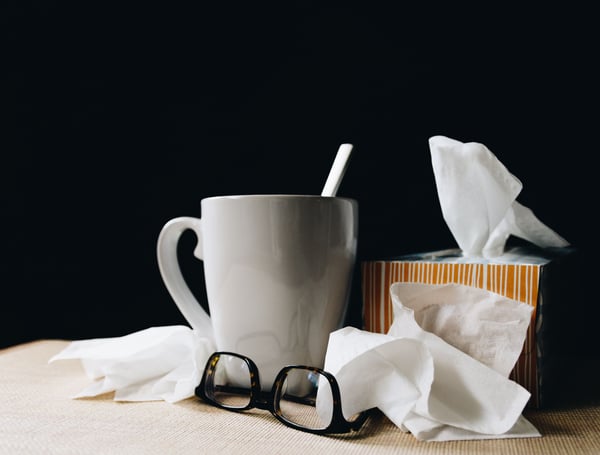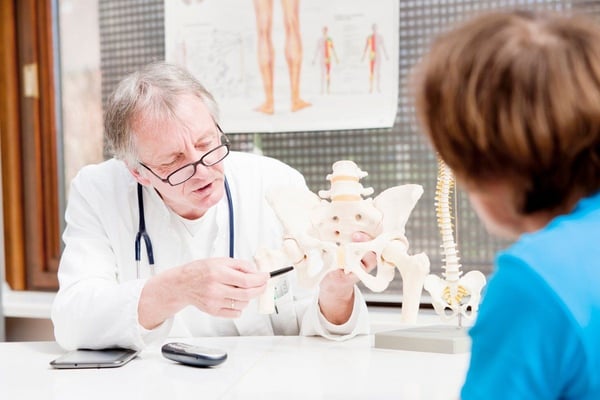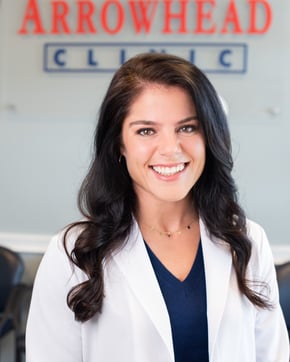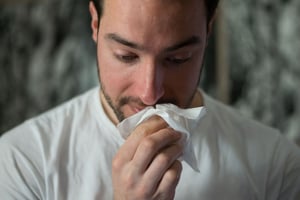We are in the middle of a global pandemic, something many living people have never seen before in their lives.
Schools are closed, many businesses are closed, and most of the country is stuck in their homes.
Here are some tips on how to stay active while you're stuck at home.
COVID-19 has changed just about everything in our daily lives, and no one is 100% sure when things will get back to normal.
We've all heard the saying that knowledge is power, so in the article below, we will talk about COVID-19, and how to stay safe during these challenging times.
Table of Contents
- What is COVID-19?
- How Does COVID-19 Spread?
- How To Prevent a COVID-19 Infection
- How To Stop the Spread of COVID-19 If You're Infected
- COVID-19 Resources
- Speak With Your Chiropractor
What is COVID-19?
COVID-19 was first discovered in Wuhan, China, in late December 2019.
The general consensus is that the virus likely came from infected animals and spread to humans.
SARS-CoV-2 is the name of the novel coronavirus that causes COVID-19.
The virus can cause severe respiratory problems and weakened immunity.
The virus hits the elderly, and people with pre-existing conditions like autoimmune disorders relatively hard.
On March 11th, 2020, the World Health Organization declared COVID-19 the cause of a worldwide pandemic.
Some infections result in fatal viral pneumonia, and the current mortality rate is about 4.76%, depending on the data available.

How Does COVID-19 Spread?
COVID-19 spreads through the respiratory droplets produced by an infected person when they sneeze or cough.
COVID-19 spreads person-to-person, most often by inhalation.
It can also spread by touching surfaces where infected droplets land and then touching your eyes, nose, or face, and mouth.
Fortunately, there is no airborne spread like the measles virus.
However, some people can be infected and have little or no symptoms, and unknowingly spread COVID-19 to others.
How To Prevent a COVID-19 Infection
To prevent or decrease the risk of a COVID-19 infection is to avoid contacting infected people and the places they have visited.
An infected person can help minimize the chance of infecting other people by strict quarantine procedures that keep the infection isolated from others.
There is still no vaccine available to prevent infection, and there is no antiviral drug available to prevent or treat the infection.
Some experts suggest that taking zinc and/or vitamin C tablets help, but such data for preventing COVID-19 is lacking.
The CDC has specific recommendations for COVID-19 prevention that are updated continuously.
The following is a sample of the guidelines the CDC has available on their website.
Make sure everyone around you knows the importance of practicing everyday preventive actions that can help prevent the spread of respiratory illnesses:
- Distance yourself 6 feet or more from other people.
- Stay home when sick, only leaving to get medical care.
- Cover your coughs and sneezes with a tissue or sneeze into your elbow if a tissue isn't available.
- Clean frequently touched surfaces and objects daily.
If surfaces are dirty, clean them first by using a detergent and water before disinfection.
Depending on the surface type and environmental conditions, the COVID-19 virus survives on surfaces for many hours.
Frequently wash your hands with soap and water for a minimum of 20 seconds, especially after using the restroom, prior to eating, and after coughing, sneezing, or blowing your nose.
Immediately throw away used tissues. If you're unable to wash your hands, use a hand sanitizer that has approximately 60% alcohol.
Know how you will address the issues of child care, school closings, working from home, travel, and other daily life demands so you will be able to cope with these significant disruptions in your lifestyle.
How To Stop the Spread of COVID-19 If You're Infected
If you test positive for COVID-19, you should immediately put on a face mask, put yourself in isolation, and contact your local health department and your doctor.
If you isolate at home, interact with only one caregiver to reduce risk to others.
Always wear a face mask to reduce droplet spread and have gloves available, if possible, for that one person with whom you interact.
And, if you are able, follow all of the CDC recommendations.
COVID-19 Resources
The links below are great resources to keep yourself informed and up to date on the COVID-19 virus.
Follow the links below to the U.S. Centers for Disease Control and Prevention:
- About Coronavirus Disease 2019 (COVID-19)
- Steps to Prevent Illness
- Symptoms
- What To Do If You Are Sick
- Frequently Asked Questions and Answers
Follow the links below to the World Health Organization:

Speak With Your Chiropractor
There is still very little known about COVID-19, so it's essential to use the resources above to keep yourself safe and informed.
If you're still able to visit or speak to your chiropractor, they also have a vast wealth of knowledge about how to stay healthy and strong.
The core of chiropractic care is to get your body working on an optimal level, so it's better able to heal itself when you are sick or injured.
That ability is even more critical during a global pandemic.
And, while still little is known about COVID-19, there are studies out about chiropractic care and the Spanish Flu of 1918.
During the flu epidemic of 1918, national figures show that 1,142 chiropractors treated 46,394 patients for influenza, with a loss of 54 patients.
That's one out of every 859 patients.
One of the most significant statistics backing chiropractic care comes from the state of Oklahoma.
In Oklahoma, chiropractors treated 3,490 cases of influenza, with only 7 deaths.
Chiropractors were also called in to treat 233 cases where medical doctors had cared for the patients and pronounced them as beyond hope.
Chiropractors took care of all 233, with only 25 deaths.
While there is still no way to predict how chiropractic care can help with COVID-19, looking back at history offers a little optimism.
If you'd like to speak with a chiropractor about COVID-19, contact the Arrowhead Clinic today by clicking the button below.



